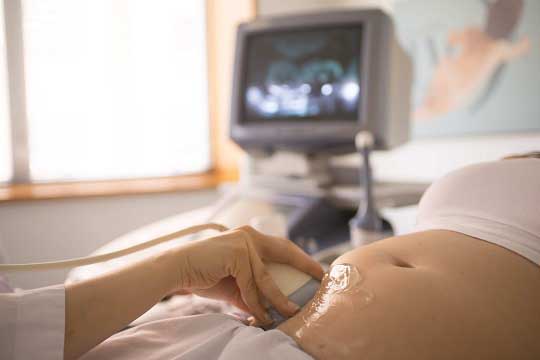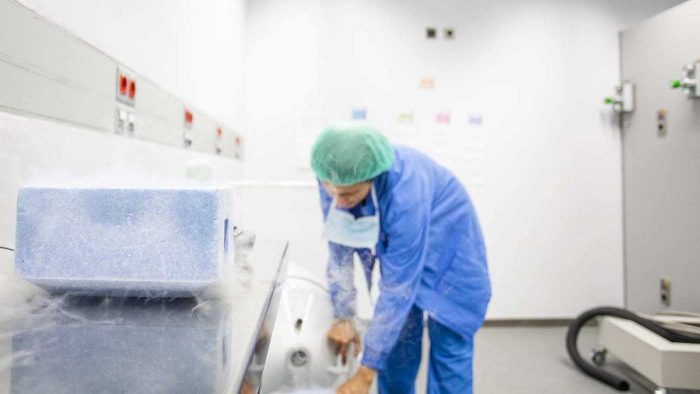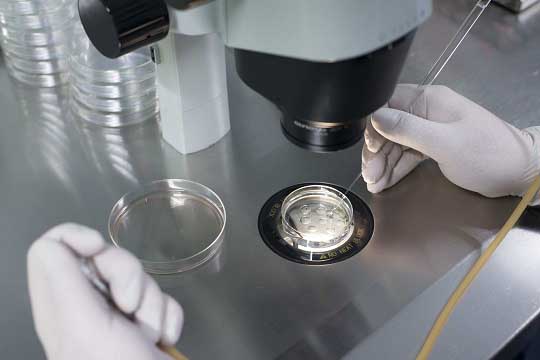

The vitrification of oocytes allows women to preserve their fertility and postpone pregnancy to a later date.
Vitrification is a highly advanced method of cryopreservation used to rapidly freeze a woman’s oocytes (eggs) at extremely low temperatures. Unlike traditional slow freezing, vitrification prevents the formation of ice crystals, which can damage the delicate structure of the egg. This results in a significantly higher survival rate during the thawing process.
Originally developed as part of the wider field of assisted reproductive technology, vitrification marks a major milestone in reproductive medicine. Early methods of egg freezing were less reliable due to limitations in freezing techniques and lower success rates. However, advancements in cryopreservation technology and evidence-based updates to clinical practice guidelines have led to significant improvements in both safety and outcomes. Today, vitrification is recognised for its proven clinical use and is a routine option for women seeking fertility preservation.
This technique is now commonly used in both planned oocyte cryopreservation-when women choose to freeze their eggs for personal or career-related reasons-and in donor oocyte in vitro fertilization cycles. Women can freeze their eggs when they are most viable-typically in their 20s or early 30s-and store them for use later in life, offering greater flexibility and control over their reproductive future.
The main benefit of vitrification is that the eggs maintain their original quality and developmental potential, offering women more reassurance when planning for future family building.
Oocyte vitrification is also suitable for a broader range of individuals. It may be offered to those with a family history of early menopause, patients undergoing assisted reproductive technologies where supernumerary oocytes are collected, or individuals using donor oocyte in vitro fertilisation. It can also be considered when embryo freezing is not possible, such as in cases of sperm unavailability. Whether for medical or elective reasons, planned oocyte cryopreservation provides a valuable fertility preservation option supported by advances in reproductive medicine and clinical guidelines.
RESULTS
Over the last 30 years, IVI has helped more than 250,000 dreams come true.
CARE
97% of our patients recommend IVI. We’re with you at every stage of your treatment, providing support and care.
TECHNOLOGY
IVI has a worldwide reputation for innovative research and has developed and patented pioneering techniques and technologies.
EXPERTISE
IVI is one of the largest fertility treatment providers in the world, with more than 75 clinics in 9 countries.


The main advantage of the vitrification of oocytes in contrast to traditional freezing, also known as slow freezing, is the prevention of ice crystals. Ice crystals, when allowed to form, can damage the oocytes and impact survival rates. By vitrifying oocytes, it removes the risk of ice crystal forming and over 97% survive the process. Furthermore, after thawing, vitrified oocytes achieve the same clinical results in fertility treatments as when fresh oocytes are used.
There are many different vitrification mediums available. However, the Cryotop medium is the most advanced with some of the world’s best results. IVI has pioneered the integration of this medium and is the European leader in its clinical use. With the Cryotop technique, survival figures of up to 97% have been achieved for young patients (<35 years old), with pregnancy rates of 65% and implantation rates of 40%.

The vitrification of oocytes is a solidification process in which the oocytes are treated with cryoprotective substances and submerged in liquid nitrogen at a temperature of -196°C. The steps are the same as in an IVF cycle: stimulation of the ovary with hormones followed by an egg collection procedure. At that point in the process, instead of inseminating and fertilising the eggs, they are vitrified and stored in liquid nitrogen.
This is recommended in numerous and very wide-ranging situations, but the common denominator is when used to postpone fertilisation and/or pregnancy for a later date. The oocytes can be kept cryopreserved for as long as the patient wants or needs within the legal time limit stipulated by the UK Government.

To ensure safe and effective outcomes, the process follows clinical guidelines and evidence-based practices developed by leading reproductive health bodies such as the ASRM and the European Society of Human Reproduction and Embryology. These guidelines help determine the best candidates for oocyte cryopreservation, the optimal timing, and how to minimise risks such as cycle cancellation or ovarian hyperstimulation. At IVI, we adhere to these international standards and draw on data from large cohort studies and registries like the HOPE registry to offer patients the most informed and up-to-date care possible


The vitrification of oocytes is commonly recommended for patients with cancer. This method gives them the option of restoring their fertility after their recovery. In addition, they will retain the same reproductive prognosis that they had when their oocytes were initially vitrified upon diagnosis. Patients who most frequently request treatment at IVI to preserve their fertility are women who have been diagnosed with breast cancer.
If you have been diagnosed with cancer, it is important that you are given all the information and advice you need in terms of your fertility preservation options. This should happen as soon as the diagnosis has been made and treatment with chemotherapy is considered.
Like any patient choosing to preserve their fertility, there are several factors to consider. These include age, ovarian function and follicular reserve. However, for cancer patients, we also need to consider the time available before cancer treatment needs to be started, and whether there is permission from the oncologist. The reproductive prognosis will also depend greatly on the number of oocytes which we succeed in vitrifying. While it is not possible to guarantee pregnancy, there will be the possibility of trying to achieve this through IVF.
Oocyte cryopreservation has come a long way since the first successful pregnancy from a frozen egg was reported in 1986. In the early days, slow-freezing methods were used, but these often caused ice crystals to form, damaging the eggs and leading to low success rates. The introduction of vitrification in the late 1990s and early 2000s changed this by freezing eggs quickly, it prevents ice crystal formation and greatly improves survival and pregnancy outcomes. As the technology improved, clinical guidelines evolved, and by 2012, oocyte freezing was no longer considered experimental. Today, it is a trusted and widely used option for both medical and elective fertility preservation.
The main difference between the two methods is the time involved in each; vitrification is a relatively quick process compared to freezing; it also avoids the formation of ice crystals, which are detrimental to subsequent gamete viability
The main advantage of oocyte vitrification compared to traditional freezing is the prevention of ice crystal formation. By vitrifying the oocytes, the risk of ice crystal formation is eliminated and more than 90% of oocytes survive thawing. Furthermore, after devitrification, vitrified oocytes have the same clinical results as fresh oocytes in Assisted Reproduction treatments.
The main advantage of oocyte vitrification compared to traditional freezing is the prevention of ice crystal formation. By vitrifying the oocytes, the risk of ice crystal formation is eliminated and more than 90% of oocytes survive thawing.